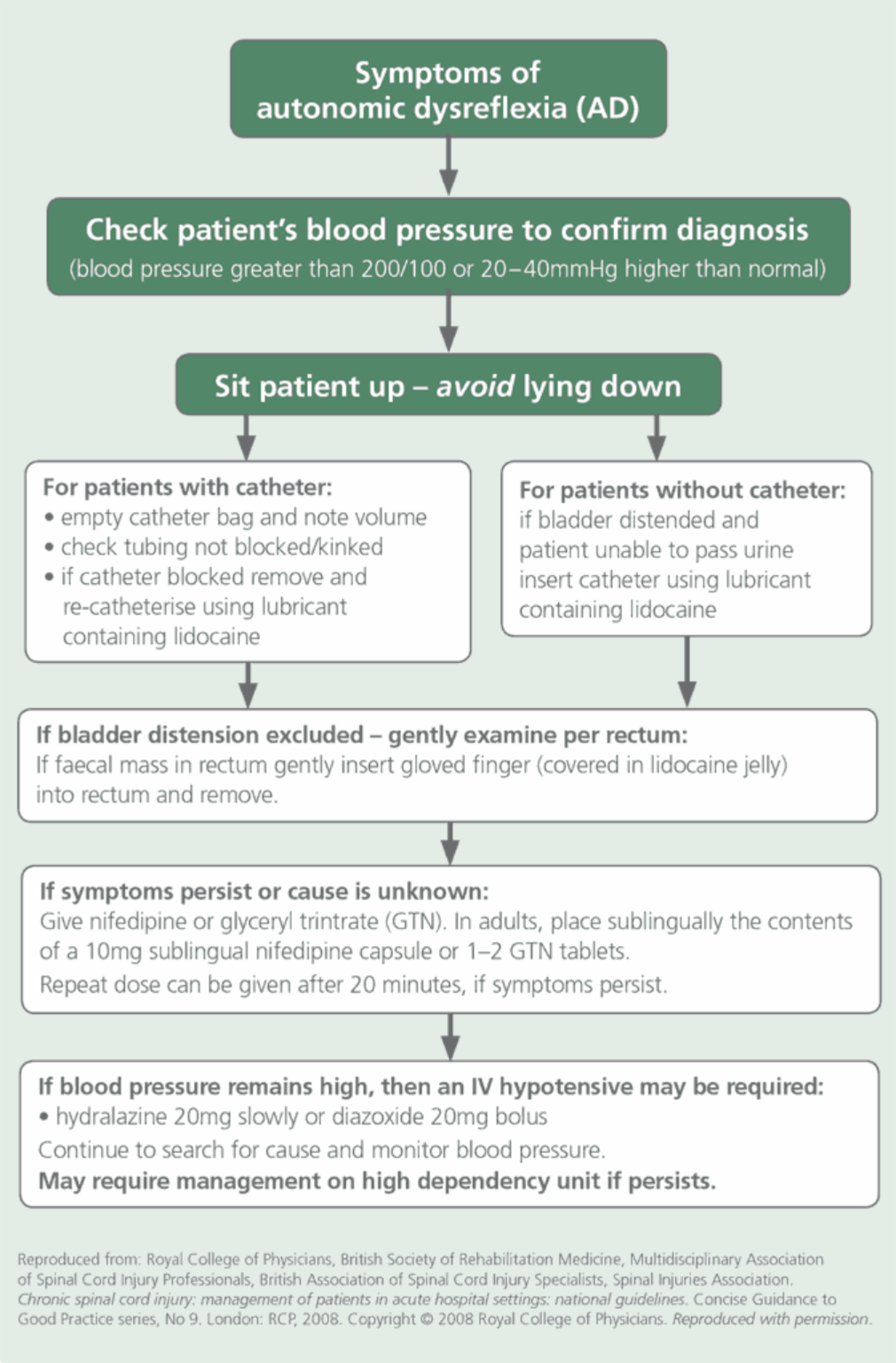AD is a sudden and potentially lethal surge of blood pressure and it is often triggered
by acute pain or a harmful stimulus. It is unique to spinal cord injuries and affects
spinal cord injured people with lesions at or above T6. It can cause an extreme
hypertension and can lead to cerebral haemorrhage and even death. It should
always be treated as a medical emergency. Examples of typical triggers are:
a full bladder, a full rectum, and an in-growing toenail.
AD can occur at any time following the onset of spinal cord injury and spinal cord
injured people with incomplete lesions are just as likely to experience autonomic
dysreflexia as people with complete lesions, although (it is reported that) symptoms
are less severe with incomplete lesions.
AD occurs without warning in response to a painful or noxious, stimulus below
the level of spinal cord lesion. This stimulus causes reflex sympathetic over-activity
below level of cord lesion, leading to vasoconstriction and systemic hypertension.
The hypertension stimulates the carotid and aortic baroreceptors leading to increased
vagal tone and bradycardia. Peripheral vasodilatation, which would normally
relieve the hypertension, cannot occur because of the injured cord. Blood pressure
continues to rise until the cause is removed. (NSCISB, 2012)
A patient with potential for AD should be issued with an AD card, which is available
from the Spinal Injury Association (SIA).
Signs and symptoms of AD
The below list of symptoms is not exclusive. Patients may experience one, all or none of these symptoms:
- pounding headache
- hypertension (significant rise from patient’s normal baseline)
- blurred vision
- pupil constriction
- bradycardia (<60 beats per minute)
- respiratory distress
- nausea
- nasal congestion
- sweating above the level of injury
- flushed (reddened) face
- piloerection (goose pimples)
- red blotches on the skin above level of spinal injury
- cold, clammy skin below level of spinal injury
- patient is restless or apprehensive
→ Section 10.e
AD monitoring tool

Outcome measures/ assessment tools
- blood pressure chart
- stool chart
- fluid balance chart
References
Autonomic Dysreflexia Factsheet (Spinal Injuries Association, 2007)
Chronic Spinal Cord Injury: Management of Patients in Acute Hospital Settings (RCP, 2008)
The Initial Management of Patients with Spinal Cord Injuries (National Spinal Cord Injury Strategy Board Working Party, 2012) [draft – unpublished]